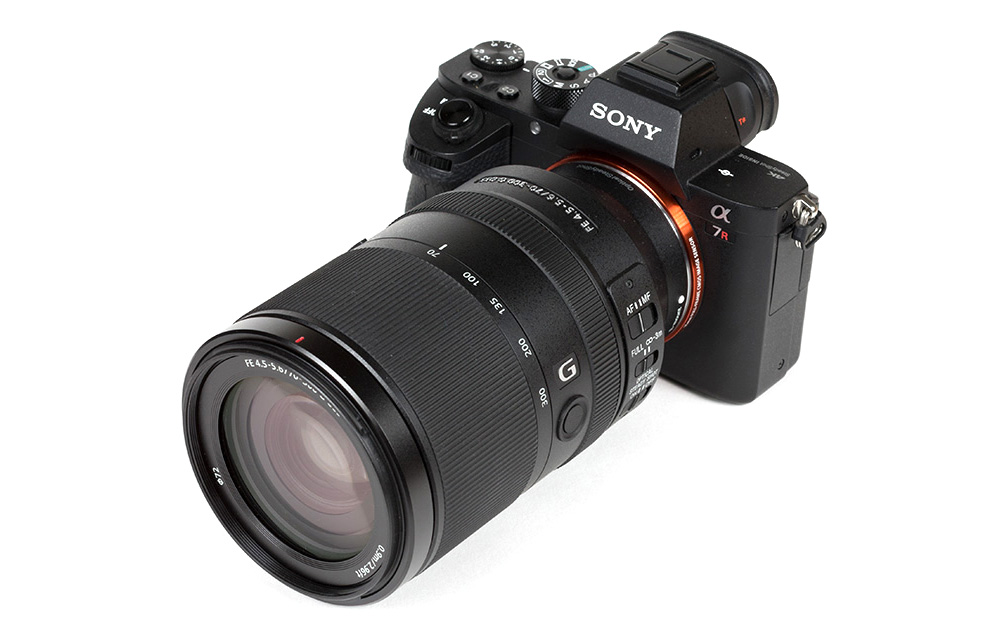
Sony’s full format mirrorless system has been an immense success in recent years and with the release of the Alpha 9 they are now truly threatening the remaining native DSLR homelands. The FE system has been traditionally weak regarding very long tele lenses. However, Sony is trying to catch up now. A little while ago they released the Sony FE 70-300mm f/4.5-5.6 G OSS – thus a mainstream tele zoom lens.
Sony is offering 4 classes of lenses – the “plain” consumer lens, the G class and at the top of the line – Zeiss and Sony GM lenses. It’s probably fair to state that G class lenses – such as the FE 70-300mm f/4.5-5.6 G OSS – are targeting the “prosumer” segment – thus not quite up there yet in terms of speed and quality but at least not insanely expensive. The latter is a relative term though – a price tag of 1100US$/1300EUR is steep. That puts it into direct competition with the Canon EF 70-300mm f/4-5.6 USM L IS in the DSLR world. In this comparison it also becomes obvious that there are limits on the size advantage of mirrorless systems. The cameras may be smaller and there can be size advantages with ultra-wide to wide angle lenses but when it comes to such tele lenses there isn’t really much if anything in it. Thus you will need that fairly big camera bag again here.
Given the fact that Sony’s Alpha cameras are very small, you may ask about the balance of a combination with the Sony FE 70-300mm f/4.5-5.6 G OSS. In the tele lens scope it’s still reasonable actually – it was fun to use it out there during the test. The build quality is very good albeit a touch below e.g. the FE 70-200mm f/4 G OSS. The biggest difference between those two is that the FE 70-300mm f/4.5-5.6 G OSS extends quite a bit (using a duo-cam system) when zooming towards the long end of the range. However, there’s no wobbling whatsoever and the control rings operate smoothly. We didn’t experience any zoom creeping. The lens is also dust- and moisture-resistant. It is worth mentioning that you can focus down to 0.9m with a maximum object magnification of just 1:3.2. That’s not quite a true macro mode but it’s close and better than most comparable lenses here.

The AF characteristics depend heavily on the specific camera that you are using. The new A9 is setting new standards here for sure. We used a A7R II for the test and the AF performance is Okay here albeit unimpressive. AF operations are also essentially noiseless. Manual focusing works “by-wire” but it’s hard to tell the difference compared to a mechanical focus ring really.
The lens incorporates a image stabilizer (“Optical Steady-Shot” or OSS). We haven’t found any claimed efficiency figures for it but we’d rate it around 3 f-stops (effectively) which is common for modern lenses.
| Specifications | |
|---|---|
| Optical construction | 16 elements in 13 groups inc. 2xED, 4x aspherical elements |
| Number of aperture blades | 9 (circular) |
| min. focus distance | 0.9m (1:3.2) |
| Dimensions | 84×143.5mm |
| Weight | 854g |
| Filter size | 72mm |
| Hood | supplied, barrel-shaped, bayonet mount |
| Other features | Weather Sealing, Optical Image Stabilizer, Focus hold button |
Distortion
The Sony lens has a decent distortion characteristic. At 70mm it shows a medium amount of pincushion distortion (1.5%) changing to very slight pincushion distortions in the mid-range to long end. This is without image auto-correction already – even less so when activating it.
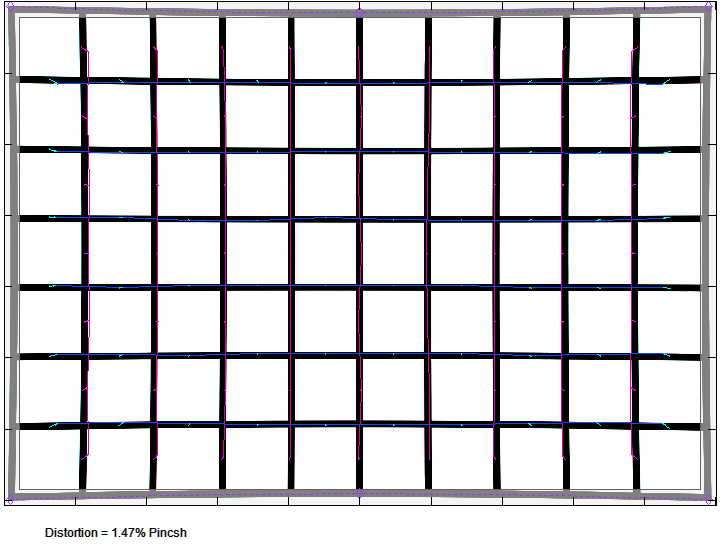
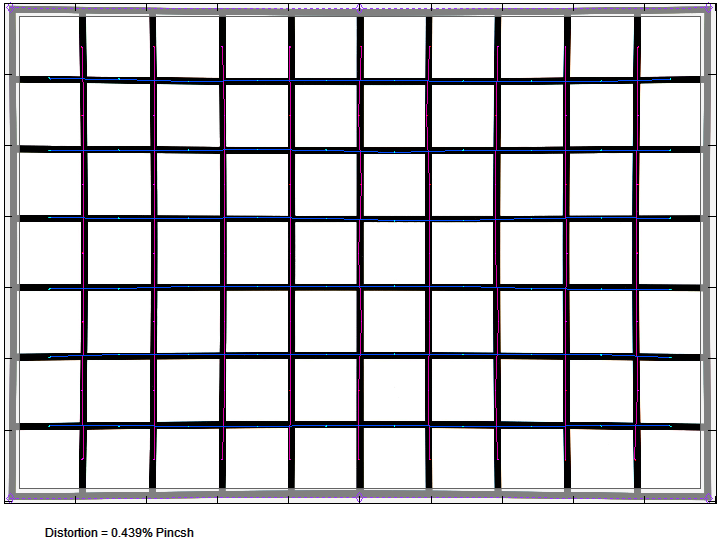
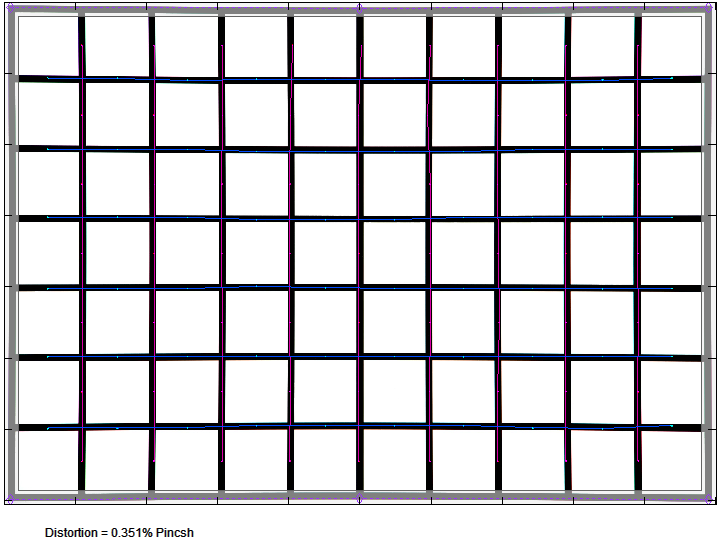
Vignetting
At fully open aperture, the light falloff is around 1.5EV (f-stops) at the extreme ends of the range and a bit less in between. This is visible but within the full format scope, it is also rather common. Stopping down by one f-stop resolves most of the issue.

With activated vignetting correction the light falloff decreases a bit but traces remain at 70mm f/4.5 and 300mm f/5.6.
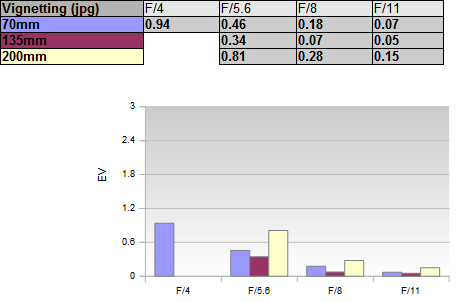
MTF (resolution)
The resolution characteristic has its highs and lows. The sweet spot of the lens is in the low to mid range. The center quality is excellent at 70mm – even at fully open aperture. The borders are still very good whereas the corners show a weakness at f/4.5 which is resolved at f/5.6 already though. The quality decreases marginally towards the long end of the range although the decrease is negligible till 200mm. The center quality remains fine at 300mm but the outer image region suffers quite a bit at f/5.6. The corners are … meh. It’s best to stop down to f/8 if you want the peak quality at this setting. The far corners remain unimpressive though.
The centering quality of the tested sample was Okayish.
Please note that the MTF results are not directly comparable across the different systems!
Below is a simplified summary of the formal findings. The chart shows line widths per picture height (LW/PH) which can be taken as a measure of sharpness. If you want to know more about the MTF50 figures you may check out the corresponding Imatest Explanations.

Chromatic Aberrations (CAs)
Lateral CAs can be auto-corrected either by the camera or via Sony’s RAW converter. This is a lossless operation so it’s a good idea to take advantage of it. However, the Sony lens is generally well corrected with an average CA pixel width of around 1px at 70mm and 1.5px at 300mm at the image borders. Based on a 42mp image size this is pretty good here.

Bokeh
The Sony FE 70-300mm f/4.5-5.6 G OSS is a slow lens. However, thanks to its long range you can still produce a fairly shallow depth-of-field if the main subject remains relatively close. That being said – you shouldnt’ expect wonders in terms of bokeh quality in this class and the Sony lens confirms this once more.
The biggest weakness are out-of-focus highlights. The inner zone of the highlight discs show a very rough and unpleasant pattern as you can see blow.

The rendition of blur in the critical focus transition zone is much better. Background blur (left crop below) is just a bit busy whereas foreground blur is very smooth.

Sample Images
Competition
Sony FE is still a very closed system at the time of this review. Eventually Sigma may put some heat on Sony but there isn’t any other lens with identical specs. However, it makes sense to take the Sony FE 70-200mm f/4 G OSS (center below) into consideration (review: HERE. Yes, it’s doesn’t quite reach 300mm but it’s faster, better and just slightly more expensive.
Sony just released the FE 100-400mm f/4.5-5.6 GM OSS (to the right below, yet to be tested). It’s a GM lens so we can probably expect higher image standards here … in conjunction with a double price tag.

Visual comparison courtesy of camerasize.com.
Honestly, the Sony FE 70-300mm f/4.5-5.6 G OSS disappointed us a little. You are buying such lenses primarily for its potential at the very long end of the range which is where the performance may not be bad but it certainly doesn't reflect the promises of a G-class lens nor its high price tag. Now that being said - the center quality is still very good at 300mm and that's where most of the action is at this setting - you rarely care for corner performance here. The quality is much better in the lower to mid range with a very sharp center and a generally decent outer image field. Lateral CAs are low. The distortion figures are well controlled for such a lens even without distortion correction. The quality of the bokeh is a bit of a mixed bag. Out of focus highlights are nothing short of rough whereas the general blur is fairly smooth. Bokeh fringing isn't relevant on a lens with a max. aperture of f/4.5-5.6.
In terms of construction quality there isn't much to complain about. The used material are of high quality and Sony implemented weather sealing. The lens extends quite a bit when zooming but then this is normal in this lens class. The AF speed is Okay on an A7R II. Sony's image stabilizer (Optical Stead-Shot) is good enough for a gain of around 3 f-stops which is roughly in line to what we've seen from other lenses in this class.
Coming to the final verdict … well, we have doubts here. The lens is a bit expensive relative to its performance. If you want to have 300mm, you just don't have another choice at the moment but if you can live with a little less we'd rather recommend the Sony FE 70-200mm f/4 G OSS instead.
-
Optical Quality
-
Build Quality
-
Price / Performance

